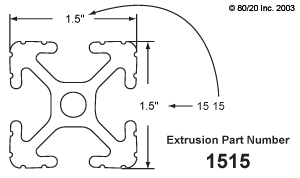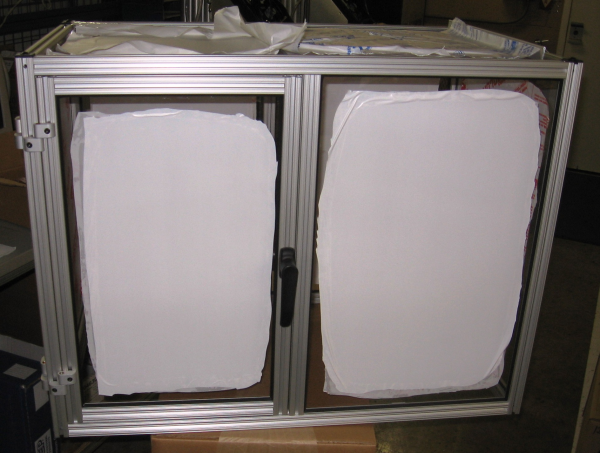-
- bimba
- Universal Robots
- dorner
- cobots
- industrial automation nj/ny
- The Knotts Company
- manufacturing
- Dorner Conveyors,
- The Knotts Co
- UR
- Robots
- PLC
- Unitronics
- automation
- humphrey products
- knotts company
- solutions
- HMI
- automation solutions
- cobot
- conveyors
- robotics
- aluminum extrusion
- aluminum extrusion in nj
- engineered solutions
- Robotiq
- air cylinder
- collaborative robots
- cost effective
- cost savings
- t-slotted extrusion
- bimba solutions
- collaborative robot
- technology
- MiR
- Humphrey
- IAI
- WAGO
- assembly
- bimba pneumatic
- machine guard
- smartflex conveyors
- solution
- 2200 Series
- cylinder
- electric cylinder
- motion control
- packaging
- pharmaceuticals
- sanitary conveyor
- Products
- automated palletizing
- automation control
- conveyor
- core competencies
- grippers
- palletizing
- resource
- robot
- AquaPruf
- Asycube
- Asyril
- Belt Conveyors
- Cage Clamp
- Food
- Machine Guarding
- Mobile Robots
- Norgren
- OptoForce
- Pneumadyne
- Pneumatic Valve
- ROBO Cylinder
- UR5
- actuators
- compressed air
- custom solution
- food safety and sanitation
- mobile industrial robot
- quality assurance
- robotics solutions
- safety
- stainless steel conveyors
- vision
- Belts
- Benefits
- Beverage
- Bimba IntelliSense®
- CT Effects
- PLC+HMI
- Proportion Air
- Proportional valve
- Questions
- Success
- UR10
- Vaccon
- automated inspection
- gripper
- improvement
- industrial vision
- intelligent actuator
- labeling application
- labor shortage
- life science
- medical
- medical industry
- pneumatic motion control
- sales process
- sensor
- thomas
- valve
- 3200 series
- 6-axis robot
- 80/20
- Acro
- Automate
- LMI
- Machine
- OnRobot
- Original Line Cylinder
- Pinch Valve
- Precision Technology
- Predictive Maintenance
- Preventive Maintenance
- Product News
- ROBO Cylinders
- ROI
- Reducing Costs
- automated mobile robot
- autonomous mobile robot
- connectors
- controls
- covid
- custom solutions
- customer service
- e-Series
- electric actuator
- electro-mechanical
- end of arm tools
- energy plant
- ethercat
- external resource
- flexmove technology
- guarding
- inspection
- machine control
- manufacturers
- monitoring
- motion
- new product
- outsource
- outsourcing
- packing
- pneumatic actuator
- pneumatic valves
- precision move
- quick response solution
- regulator
- sales tools
- steel frame
- vacuum
- vacuum technology
- welded steel frame
- 7X Series Conveyor
- AMR
- Advantages
- Application
- Applied Motion Products
- Asycube 530
- Asyfeed Pocket
- Balanced Valves
- CNC program
- Continuity Inspection Tool
- Control Panel
- Controllers
- Crowned Pulley
- F22 Series
- Factory Improved Productivity
- Filtration
- Fire Fighting
- Flexible Feed
- Freeze protection
- Gas
- High Pressure Regulator
- IP65
- Inspekto
- IntelliPress
- Intellisense
- International Manufacturing Technology Show 2016
- LARGO A5
- Legos
- MIRAI
- Machine Controllers
- Machine Vision
- Micropsi
- NJ
- NY
- New
- New Scale Robotics
- OEE
- Oil
- Optimization
- PACK EXPO
- PC10
- Parison Blow Molding
- Pick-it
- ProControl Series
- ROEQ
- Rain Test
- Resin Block
- Rio Olympics
- SCHUNK
- Sanitation
- Sensors
- Smart Manufacturing
- Spot Welding
- TRD
- Temperature Controller
- Training
- Trio Manufacturing Technology
- Twist Clamp
- UR3
- UniStream
- Universal
- V-guide
- Valve Assemble
- Vane-Buster
- Versagrip
- Versagrip solenoid pinch valves
- Victory Actuator
- Vision430
- XTR Series
- Yamaha
- balanced solenoid valve series
- bimba electric
- bottle filling
- brewery
- brushless motor
- buna
- center point
- chicane
- cloud
- cobot compliance
- collaborative operation
- compact series
- composite cylinder
- conference
- cost
- date code
- demonstration
- desiccant drier
Get the latest in your inbox.
 Choosing the correct 80/20 aluminum extrusion profile for your application can be difficult. The two main factors that it will affect your decision making process the majority of the time are, structural integrity, and overall cost of material.
Choosing the correct 80/20 aluminum extrusion profile for your application can be difficult. The two main factors that it will affect your decision making process the majority of the time are, structural integrity, and overall cost of material.
80/20 Profile Selection
80/20 offers a wide variety of fractional and metric profiles. The fraction includes the 10 series (1" by 1") and the 15 Series (1.5" by 1.5"). Here is a comparison of the 10 series and 15 series profile standards:
10 Series:
- 1" by 1", 1010 increases in size to 2" by 4", 2040
- The center of the t-slot always measures .5" from the edge of the profile.
- 1010's estimated area: .4379 Sq. In.
15 Series:
- 1.5" by 1.5", 1515 increases in size to 3" by 6", 3060
- The center of the t-slot always measures .75" from the edge of the profile.
- 1515's estimated area: 1.154 Sq. In.
A breakdown of the all the extrusion profiles are located on pages 156-158 for the fractional and pages 646-649 for the metric in the 80/20 catalog. (To request an 80/20 catalog go here)
Choosing The Correct Profile
For this example, we will focus on the fractional series extrusion since the fractional and metric series are comparable. Here is an example for choosing the correct extrusion.
Machine Guard Application - Need to enclose a robotic cell for safety. Also will need access for maintenance. The robotic cell is 3' by 3' by 3' and the current structure does not have a frame to attach doors and panels.
- Extrusion for machine guard frame: 1515-L
- The frame will need to support doors. 1515-L is best suited since the frame does not have to support anything other than itself. This choice will decrease the overall cost of material without sacrificing the structural integrity.
- Extrusion for machine guard doors: 1515-UL
- We stay with the 15 series for consistency in hardware.
- The door is only supporting the weight of the extrusion and 1/4" panel in the t-slot. Choosing the "Ultra Light" cuts back on the overall cost of material.

This is a very simple application, but even when you increase the complexity, you still focus on the structural integrity and cost of material. It is a fine balance but there is a correct combination for any application.
Download a copy of the 80/20 Deflection Calculator
Interested in Learning More?
Please fill out our contact form, and a member of the Knotts Team will get in touch to help you.
%202.png?width=323&height=215&name=PH_VA_VR_Series_Technical_Support%20(1)%202.png)


